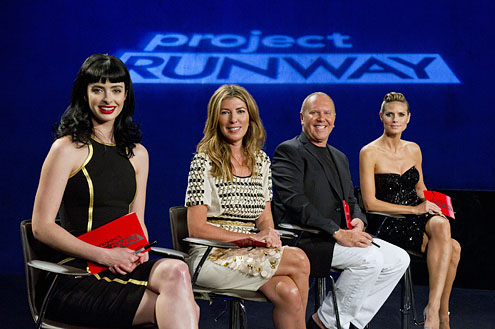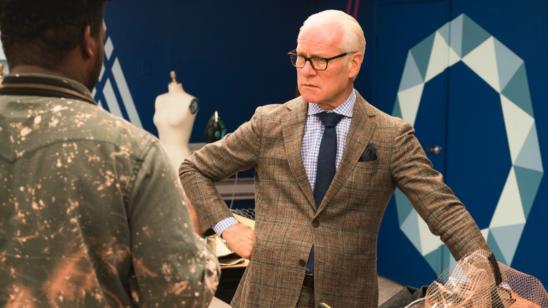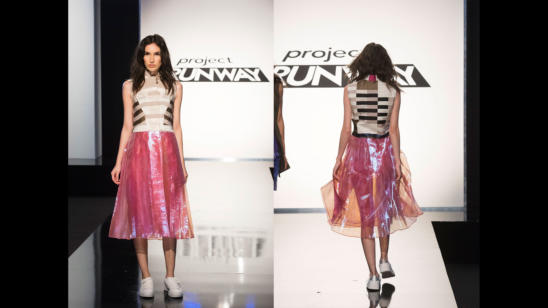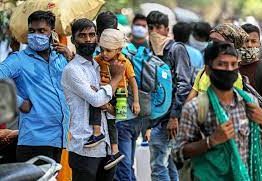“Seriously, Mom, you should watch Project Runway. I think you’d like it.” This from daughter Angela in 2008.
Hmm. A reality show. I’d quickly tired of The Bachelor; an episode of Top Chef had left me hungry; and the thought of Americans setting up Amazing Race competitions in poorer countries made me feel vaguely embarrassed.
I sat down with Angela and watched several episodes of this clothing design competition. She was right—it was riveting. The plots were interesting, and the creations eye-popping. It helped that I love everything—textures, colors, prints—about textiles.
We finished Season 4 and watched Seasons 5, 6, and 7. Then my husband and I moved to Turkey. But thanks to websites like vidxden, we managed to catch Seasons 8 through 10 there, returning to the States just as 11 was starting.
I’ve now finished Season 15. For me, Project Runway has never gotten old, never gone out of style.
The show takes viewers along with designer contestants for an hour and a half each week as they work to complete challenges. Create evening wear inspired by the Getty Art Museum in Los Angeles. Put together a dress made only from materials found at a hardware store. Consult with your mother and design an outfit that makes her look great. Viewers watch as designers sketch ideas, make decisions about materials, and work individually or in groups to produce clothing, all within 24 to 48 hours.
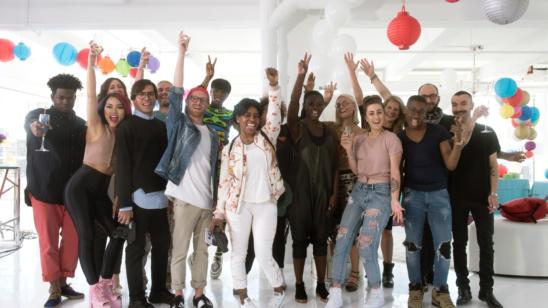
Designers work together in one workroom and the footage is edited, making contestants’ efforts and occasional spats more dramatic. Still, the viewer can see personalities emerging as designers struggle through the process week after week. One contestant hasn’t purchased enough fabric: will anyone step forward and lend some of theirs? Another can’t come up with the inspiration to finish a garment. Will anyone produce a helpful suggestion, or at least a hug? Some designers are laser-focused, while others seem distracted, psyched-out by the presence of others.
More valuable to me than “getting to know” a variety of people is the fact that the clothing design process so often parallels the writing process, and thus teaches me about my craft. It would be boring to watch another writer work. But it fascinates me to see someone who works with her hands, not inside her head, move through the creative process. Receiving the inspiration to begin work. Selecting the building blocks—in this case, fabric. Decisions on color and print approximate a writer determining the structure of an essay. And the fabric’s heft—the ease with which it conforms to the garment’s styling—are like the words a writer chooses. A poor fabric choice can cause a pleat to go limp. A poor word choice can make a sentence sag.
And then, point of view. This is, in part, sense of style, but also uniqueness and originality, and it is important. “You have a definite point of view,” the judges sometimes compliment designers. But more often, they complain, “I still don’t know your point of view.” An example from Season 14 was Ashley Nell Tipton, a zaftig Mexican American who created colorful plus-size clothes that ended up as objects of envy. Sometimes the show sets up designer-client situations in which contestants have to be true to their own viewpoints, pleasing customers, but not selling themselves out.
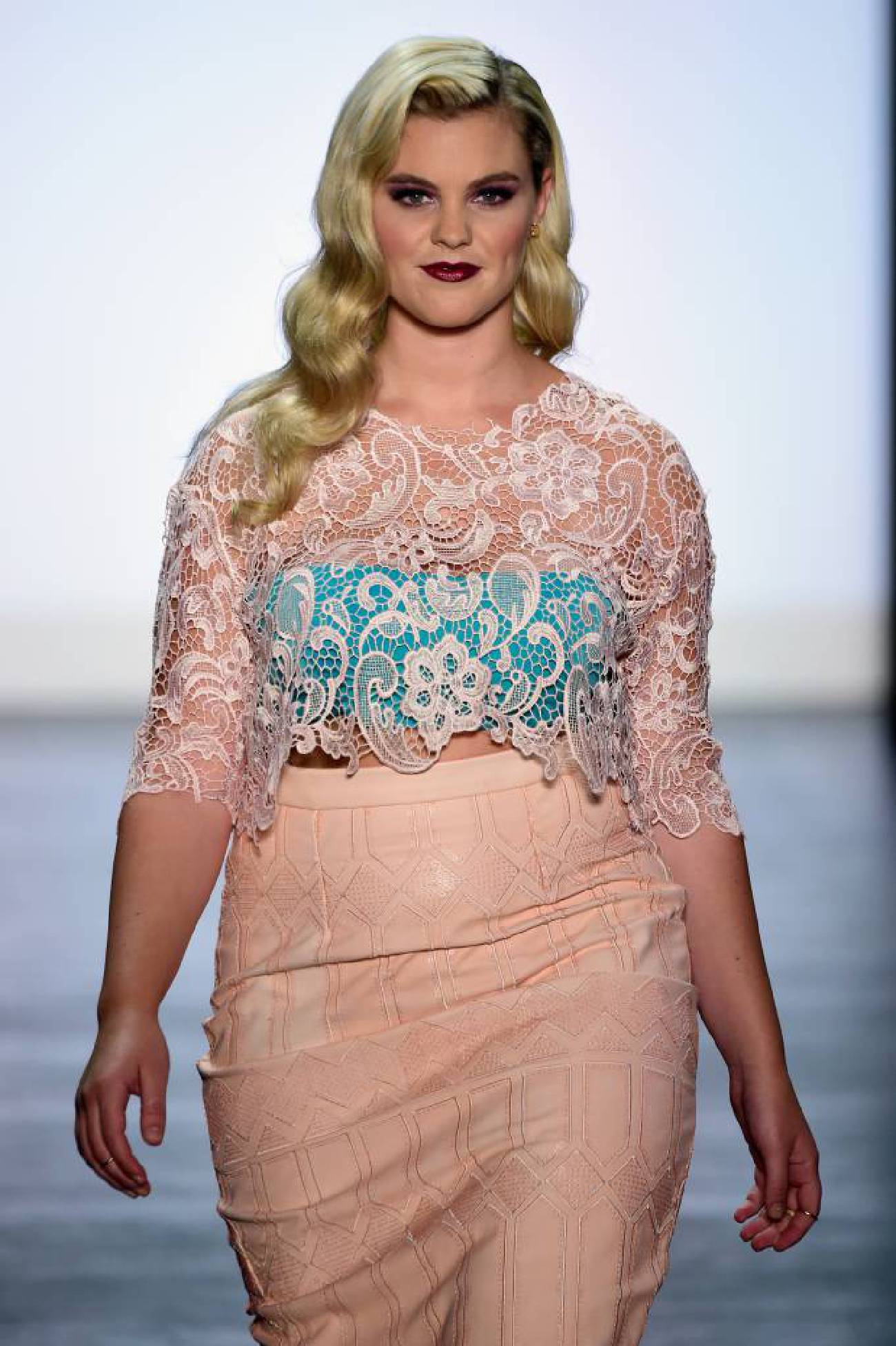
Each designer is critiqued halfway through the weekly challenge by longtime Parsons School of Design faculty member, Tim Gunn. The contestants need to sort through this new information, honoring their own vision while being receptive, flexible, and strong enough to take constructive feedback. This is, for me, the most poignant part of the show. I see the garment and the designer’s struggle. And I also see myself, weighing the advice of my writer’s group against my own instincts. I’ve been surprised at how often designers are told to edit their work. That advice resonates with me because I sometimes put too many ideas into my essays, creating a muddled message.
Finally, contestants perfect their outfit for display. Finishing involves self-doubt, leaps of faith, and sometimes last-minute inspirations that either make or break the look.
Then it’s runway time: judgment by a panel of three or four commercially successful designers, with the objective of choosing the week’s winner and eliminating one contestant. I like the runway because I also get to appraise the final products (unlike food shows where I can only salivate). But this is where it can get difficult for designers: their finished garments are products of tremendous effort, but sometimes they are not deemed flattering or “fashion-forward.” Three designers are “on the bottom,” and one is out. Not so different than an essay of mine being rejected for publication.
I am reminded that reactions to art are subjective. Tim has liked something, but the judges have not: who is correct? A contestant has been a winner several times, and now all of his or her work has an aura of great promise. This is the halo effect, and it can also boost a best-selling author’s subsequent writings.
One truism that seems to run through each season is that designers who have the hardest time focusing, who pay too much attention to the little dramas around them, tend to get eliminated.
Project Runway contestants have often put their lives on hold for design, subsisting on tiny incomes. Male contestants often recount their early fascination with women’s clothing, a trait hardly endearing to their middle- and high-school peers. The contestants’ grit is inspiring—but just like writing, there isn’t the opportunity for all—or even half—to succeed.
Week after week I see my own decisions, determination, loneliness, uncertainty, occasional envy, and doubt that can bloom into hope when a piece turns out well. I learn that not all work yields dividends; that being coachable is crucial; and that focus might be as important as talent. Somehow, even with the dwindling number of contestants, each week I feel inspired to try harder.
Last season among the semi-finalists were gorgeous Laurence Basse, 41, a former model from Guinea, West Africa; immensely empathetic Mah-Jing Wong, 28, an African American whose father was Chinese (“I don’t look at all like him, and so my name confuses everyone,” he lamented); and likeable, talented Roberi Parri, 32, from Venezuela, who had what I thought was the perfect first name for a designer (Doesn’t “By Roberi” have a nice ring to it?).
I’m sure Project Runway producers are pleased to have a dedicated viewer like me. But the odd thing is, at the end of the season, as the most dramatic and supposedly exciting episode approaches, the one in which a single designer takes the grand prize, I lose interest. I’ve already gotten all I want from the season and I’m eagerly awaiting the next. It’s the process that keeps me going.
